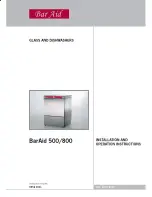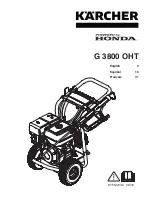
8
Connect the inlet hoses to the washer
IMPORTANT:
Make sure that the flat washers have been placed
into the hose couplings.
C
H
H. Hot water inlet
C. Cold water inlet
1.
Attach the hot water hose to the washer’s hot (H) water inlet
valve. Screw on coupling by hand until it is seated on the
washer.
2.
Attach the cold water hose to the washer’s cold (C) water
faucet. Screw on coupling by hand until it is seated on the
washer.
3.
Using pliers, tighten the couplings with an additional
two-thirds turn.
NOTE:
Do not overtighten or use tape or sealants on the
valve. Damage to the valves can result.
4.
Turn on the water faucets completely and check for leaks.
NOTE:
Replace inlet hoses after 5 years of use to reduce the
risk of hose failure. Record hose installation or replacement
dates on the hoses for future reference.
Periodically inspect and replace hoses if bulges, kinks, cuts,
wear, or leaks are found.
Connect the Drain Hose
Remove drain hose from washer drum
1.
Use locking pliers, squeeze hose clamp tabs together and insert
over the end of drain hose.
2.
Slide drain hose onto washer connection.
3.
Once drain hose is in place, release pliers.
4.
Washer drain system can be installed using a floor drain, wall
standpipe, floor standpipe, or laundry tub.
Laundry tu
b
drain or standpipe drain
A B
Connect the drain hose form to the corrugated drain hose.
A. Snap either end of the drain hose form to the drain hose at the point
where the corrugation begins.
B. Bend drain hose over drain hose form and snap into place.
To keep drain water from going
b
ack into the washer
■
Use the drain hose form, and do not force excess drain hose
into standpipe. Hose should be secure, but loose enough to
provide a gap for air.
■
Do not lay excess hose on the bottom of the laundry tub.
Floor drain
You may need additional parts. See Floor drain under “Tools and
Parts.”









































